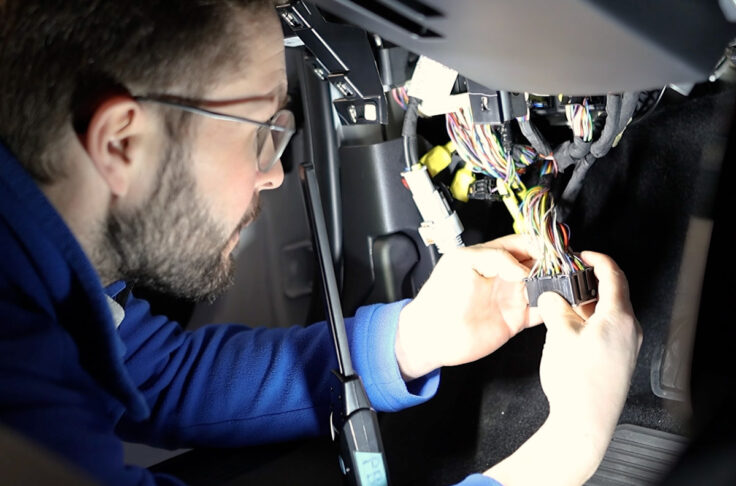Insights Interview on the North American Car Sharing Market
Summary
We interviewed Sandra Phillips, Founder & CEO of movmi, and Venkatesh Gopal, Principal e-Mobility & Financial Feasibility, about car sharing in North America. The topics included the history of car sharing in North America, pioneering operators, the health of the industry, trends, and examples from Vancouver. movmi is a Vancouver-based consultancy focused on shared mobility, from micromobility, and car sharing to Mobility-as-a-Service. They specialize in Shared Mobility Architecture: the design, planning and growth of shared mobility services. movmi’s team works with public as well as private sector organizations and has been involved in over 85 shared mobility projects worldwide.

The North American car sharing market is complex, featuring a diverse range of business models implemented on the streets. Operators employ various strategies, such as station-based services, peer-to-peer car sharing, and free-floating services, to address distinct use cases and offer distinct services. In addition, the North American car sharing market is one of the largest in the world. To address and explain some of these complexities, INVERS recently published a quality report on “Car Sharing in North America”. This free-of-charge, 50-page report helps car sharing operators quickly understand key market dynamics, insights, and trends. Our report also highlights statistics and findings from the US, as well as Canadian and Mexican markets.
Can you name the pioneering car sharing operators in North America? When did car sharing begin in North America?
The launch of Communauto in Quebec City, Canada in 1994 marked the start of car-sharing services in North America. This was followed by Modo car-share, AutoShare, and CarSharing Portland launching in Vancouver, Toronto, and Portland respectively. These along with Flexcar and Zipcar could be considered as the pioneering operators in the region. With these operators, car-sharing was primarily station-based and round-trip. In 2012, car2go brought the free-floating car-sharing model to North America.
What is movmi’s current estimate of the size of the North American car sharing fleet?
Our research and analyses estimate the car-sharing market in Canada, the US, and Mexico together to be around 30,100 vehicles (excluding peer-to-peer car-sharing).
Can you share your perspective on the outlook of North American car sharing, the industry’s health, and trends?
Speaking of the broader industry, as capital costs continue to rise, we observe interest peaking in self-drive, on-demand car-sharing models among traditional car rental organizations. The on-demand carsharing model appeals to corporate employers and B2B organizations as a more environmentally sustainable alternative to offer to their employees as benefits. Meanwhile, car-sharing operators across the region continue to have unmet demand. They also have been scrambling to add new vehicles to their fleet. Insurance rates continue to balloon which has caused operators to look for prudent fiscal management measures.
Electrification remains a sizeable opportunity. Cities and higher levels of government are taking steps to support car-sharing businesses. Case in point, multiple Federal and State government grants in the US were announced and awarded starting in 2023. The same year, the Canadian Federal government increased the vehicle limit for electric vehicle rebates for a carshare operator from 10 to 50 vehicles.
You are living in the Vancouver metropolitan region. What is your take on the local car sharing ecosystem?
Vancouver is lucky to have multiple car-sharing models thriving in the region. Between Evo, Modo, and Turo, the residents have a free-floating, station-based round-trip, and a peer-to-peer service to choose from. The cities in the Metro Vancouver area have been showing their support with preferential parking rates and promoting car-sharing as a part of their climate action plans. All carshare users can park for free for up to 2 hours (during a trip) at any of the metered and non-metered parking within the City of Vancouver which acts as a small ‘thank you for sharing’ incentive and goes a long way in reducing friction in the user journey. Just last month, the City eliminated minimum parking requirements citywide for developments. This only adds to the sustainability efforts in the region to drive more users towards alternative modes of transportation including car-sharing.
The operators have reciprocated by adding vehicles, locating them strategically to make it easier for users to live car-free and be able to connect to other public transport modes. For instance, placing vehicles at the SkyTrain station locations and ferry terminals and making that intermodal exchange possible in the physical world.
Digital integration is great too, when done well. movmi has been working on the region’s first Mobility-as-a-Service pilot, RideLink, with Evo, Modo, Mobi (Vancouver’s bike-share system) led by TransLink. This is a multimodal mobile app that enables users to plan, book, and pay for all these services. We are excited to see how well this is utilized and supports the users to consider a multimodal lifestyle. Through data analysis, we hope to understand the effect on car-sharing usage when integrated into public transport and micromobility networks.
Further insights into the North American car sharing market
Thank you, Sandra and Venkatesh, for your great insights.
For more information and interesting findings about North American car sharing, we encourage readers to check out our 50-page Car Sharing in North America white paper. To discover more from movmi, please visit their website.


